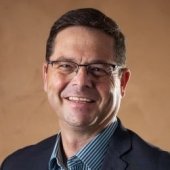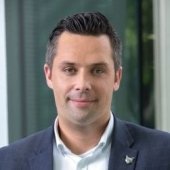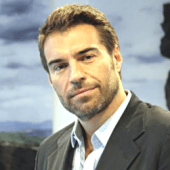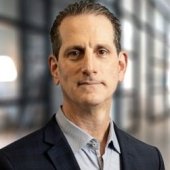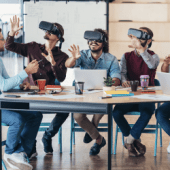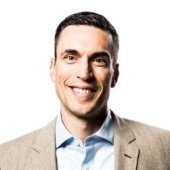How we’ll work next with Nina Henderson, International Workplace Group Director
IN BRIEF
- 5:15 – There are a couple of things that concern me as we continue to use collaboration technologies: One, I think it’s very difficult, if not impossible, to maintain a cultural identity. Two, I think they are transactional in nature. They are designed to get things done. They are designed to check a box and move on.
- 12:40 – The traditional work week is no more and will continue to evolve to the point where there will be just a work time-period, and I think it’ll be up to individuals to regulate that.
- 16:00 – How we work, what we value in work, choosing who we work for and with will change dramatically as we go forward.
Joe Kornik, Editor-in-Chief of VISION by Protiviti catches up with Nina Henderson, Director, International Workplace Group, CNO Financial Group and Hikma Pharmaceuticals to discuss the future of work. Currently, she chairs several human resource/compensation committees and is a member of audit, corporate social responsibility, and governance committees for these NYSE and LSE listed companies. Nina is also vice chair of Drexel University’s board of trustees, a commissioner of the Smithsonian National Portrait Gallery and a director of the Visiting Nurse Service of New York and the Foreign Policy Association.
HOW WE’LL WORK NEXT WITH NINA HENDERSON, INTERNATIONAL WORKPLACE GROUP DIRECTOR - Video transcript
Joe Kornik: Welcome to the VISION by Protiviti interview. I’m Joe Kornik, editor-in-chief of Vision by Protiviti, where we look into the future to examine the implications of big topics that will impact businesses worldwide over the next decade and beyond.
Today, I’m joined by Nina Henderson, director of CNO Financial Group, International Workplace Group and Hikma Pharmaceuticals. Nina chairs several human resource compensation committees and is a member of the audit, corporate social responsibility and governance committees for a number of companies. She is also vice chair of Drexel University’s Board of Trustees, a commissioner of the Smithsonian National Portrait Gallery and a director of the Visiting Nurse Service of New York and the Foreign Policy Association. Nina, it’s so great to have you here with us today.
Henderson: Great to see you, Joe. Thanks for having me.
Kornik: Nina, when you think about the future of work, let’s say a decade from now — 2030 and beyond — and the people who will be doing that work and how they will be doing it and the impact it may have, what jumps out to you the most?
Henderson: I’ve been thinking about this in general, and there are so many things being postulated now about how going to work, being at work, what we’ll do, who will do it, where we’ll do it, and all that is near-term. So, the more fun thing is that you’re saying, “What about 10 years from now?” and we have to suspend what we used to call work and what we used to call productivity, and there’s going to be a lot of change in both of those aspects.
Also, what’s happened here is, we are enhancing a bifurcated society, and somehow, we’re going to have to learn how to work with that much more effectively. We can’t have two parallel economies funded by workers in two different worlds. That will be surreal, and there won’t be any synergy, and you need synergy to make the world go round. That will be interesting. There won’t be, hopefully, a severe cut between what is now being called knowledge workers — office workers — versus people that are day in day out producing, making, servicing.
Kornik: It’s interesting that you talk about that dichotomy between office workers and the two different classes, because one of the levelers, traditionally, has been technologies and some of the collaboration technologies that we’ve seen during the pandemic. Obviously, we probably wouldn’t be able to get through the pandemic without those collaboration technologies. We had them before. They were on rocket fuel during the pandemic in terms of their adoption and their use. I’m curious: What are their near-term and longer-term impacts on employees?
Henderson: The whole notion of collaboration, maybe we’re thinking about that, about the office workers who went home and/or went to another part of the state or their vacation home or whatever and collaborated on virtual platforms. Collaboration is a wonderful word, but I don’t know that we have propelled the ability for true collaboration against the multiplicity of synergistic employers and employees and deliverers of goods, services, products, etc. That’s one big thing. You have to redefine what collaboration means, and redefine what technology means as far as, there’s a subquestion that you bring up to me when you phrase that, and that is this whole notion of, how are people responding to this?
Now, we get a lot of commentary that people are getting the old ennui. They’re being bored about it. They’re being detached. One of the serious things here is that human nature is that you want to be around other people — you really do, whether it’s socializing, your family, your fellow workers. Even to see people walking around the city is kind of exciting, or out in the woods — it doesn’t matter. We will, as human beings, always want to see other people, and we’ve been in a forced situation here where we’ve had a limited ability to interact. If you’ve got a family at home, you’ve been interacting solely with them.
Yes, you interact a bit on these virtual platforms, but you’re not with anybody. It’s a digitized representation. You’re not with anybody, and the reality is, you can’t see if someone’s looking at you. You can’t get all the other cues of communications that humans have in terms of, am I leaning into you? Am I really interested, or am I shrugging my shoulders, or am I looking down at my desk and doing my email while I’m on Zoom or Microsoft Teams? You just wonder what’s happening here.
There are a couple of things that do concern me as we continue to use this technology. One, it’s very hard to maintain a cultural identity with it — almost impossible. Two, it’s transactional in nature: You get things done. You check a box. You move on. My niece, a 25-year-old, gave me a mug for Christmas that says, “I made it through another Zoom that could have been an email,” and we’re not sophisticated enough to be selective about how we’re doing things — the cultural thing, the transactional nature.
The other thing is that it’s very hard to have a sense of belonging — not just culturally, but also belonging and exchanging. That will become very difficult for human beings to continue. The fourth thing that I’m concerned about is innovation and creativity. Innovation can be sparked by an individual. Yes, but more than likely, it’s brought to life by groups of people working together, 1-2-3. All of that is being lost. If we were to rely on using, in your words, collaborative technology, we would fall behind in a competitive race worldwide.
Kornik: Nina, you make a lot of great points. I just wonder, I think how different even this conversation would be between the two of us if we were sitting in a in a room on the couch, across from each other. All the verbal cues that we’re potentially missing, and we’ve been on so many Zoom calls for so long now during the pandemic. And as we move forward, the key is, how do we position these tools, and how do we use them? You mentioned your niece, who clearly comes from a different generation than you or me, and how they process information is obviously very different. So, there are a lot of generational forces too that business leaders and executives need to be thinking about as they look forward for the next 10 years.
Henderson: First of all, the niece that you mentioned, she’s 25 and she’s working, and she’s out of college, and she went through college, came out, etc., went to work before the pandemic. There’s a big difference, and I’m going to make that point now. We as employers and as people wanting to bring along groups of people to do well for society and for themselves, we have a major issue, and that is, when you look at the high school children and the college-age young adults over the last two years, they’ve essentially spent all of their time in their childhood bedroom. This is a tremendous strain, because many things happen, as we all know as parents and as family members, as teachers, as employers, to young people as they proceed through their last years of high school, enter college or enter the workforce if they don’t go to college — if they don’t want to, that’s just fine.
But all of the adulting skills that would have naturally progressed in a very formative period of these young people’s times have been squashed. From a standpoint of employers and societal needs, we’re going to have to help these young people come along. I’m vice chair of the board of trustees of a university, and I also chair academic affairs there. We used to give a student that was having trouble three semesters to be able to bring themselves up to the capability that was required. We now have expanded that to four because we realized that they just weren’t ready when they came in.
It has nothing to do with how wonderful the high school teacher was or how much they decided. It’s just darn hard when you don’t have the decision-making that comes with having to go — even in high school, when you join the team, all of those things, you were allowed to learn to socialize, make decisions on your own when you went away from home, all of that has been left. We’re dealing with, as employers and a society, a solid 10 years of that group of people needing extra help and some understanding to move forward. That’s one.
Number two, let’s think about the fact of looking up. For most all of us, the reality is that we have spent the last 10 years looking down. We are looking down at some kind of a machine, and if one loses the ability to look up, you are going to lose the ability to notice colors, to notice forms, to notice those communication cues that you and I mentioned earlier. There’s a real issue there.
Also, if you’re spending a large portion of your time on apps, which are predigested information being given to you — yes, you’re selecting which one you want, but basically, what’s in there, you haven’t curated. It’s been curated for you, and as it has progressed from, let’s say, Facebook to Instagram, and now we’re down to TikTok and Snap, what do you do with a population whose attention span is 46 seconds?
I’m not criticizing — that’s really interesting. But how do you work with an entirely different group of people used to receiving things in a quick, shorthand way with attention spans — I’m not criticizing. I’m just saying these are realities, and we have to think about, how do you enthuse people like that? How do you keep them involved? How do you let them work their own magic. Does this resonate for you, what I’m suggesting here?
Kornik: Absolutely. I’ve had these conversations, you know, exploring this topic with several people, specifically around the generational differences between the multiple generations in the workforce leadership styles — how people have come of age in an age of technology versus not an age of technology. It’s fascinating.
One thing that will be interesting for companies and business leaders to think about over the next several years, the next decade, is, where do those people work? Are you going to bring all those people back into a traditional office setting where they get to collaborate or interact with each other or maybe mentor or maybe shadow someone and see leadership styles? There’s a whole generation now, or two years’ worth, of employees who are maybe even more comfortable working from their home office or working from their kitchen table and not having to be elbow to elbow with their coworkers or even clients or customers. That’s a fascinating piece of this. I’m curious as to your thoughts: Do you ever see us returning to what we call a traditional workweek in a traditional office space?
Henderson: There’s still the traditional workweek — actually, it’s been expanded. I feel like Maggie Smith in Downton Abbey — “What is a weekend?” because the reality is that your workweek now goes right into Saturday and Sunday, and unless you provide some dropdowns on that, it just stays that way. Work is done when you can fulfill it and when you make the time to do it. I don’t think that’s going to change. That’s going to evolve more. There will be a work time period — maybe not a workweek, but there’ll be a work time period — and depending on whether it’s a team effort, you’ll have to figure things to schedule with other people. Other times, if it’s a sole-capacity or thinking situation, you might do that at your leisure, whatever the case may be. The time parameters around work will change. The definition of work will change, and the word productivity will have to have a whole new definition.
Kornik: I’m curious about what your definition of productivity will be in the future.
Henderson: I don’t think it will be the number of virtual platform meetings that you can throw into a day or how many boxes on those virtual platform meetings you can get on — you know, 20 or 30 people. I do not think that will be a definition of productivity. Right now, we have fallen into the trap of thinking of transactional activity as productivity. That’s not productivity. Productivity is being able to build, to add on, to create, to open new territories, to open new thought waves, to make new products, to open new markets, etc. That’s productivity, and that is pretty hard to do in the way we have been operating the last two years.
Kornik: We talked about a lot here today, and you’ve given us a lot to think about. I’m curious, though; When you look out, let’s say to 2035 — we’ll take 13 years in the future — give me a few examples of how that might look. Is there anything that we haven’t discussed today that you think will surprise us or will be a little bit different or that hasn’t been in the parameters of this conversation? Ultimately, do you think work will end up being a more fulfilling, engaging, positive, enjoyable experience for employees in 2035, maybe more so than it is than it is now, or it was pre-pandemic, even?
Henderson: We have to be realistic. Work is work, Yes, work is to underwrite your capability to live your life, so it should be engaging. It should be rewarding both financially and in terms of personal sense of self. It should give you a place in community, within your overall local community but also within your business community, your operation community. But it’s still work. So, I don’t think that that’s going to change years from now. And sometimes you’ll have jobs where you feel tremendously fulfilled, and sometimes you’ll have positions where you’ll think, “Oh, boy.” That’s going to be there, but how we work and what we value within work and how we will choose who to work for or with will change dramatically as we go forward.
Kornik: Nina, thank you so much for your valuable insights, your unique insights. It was such an interesting conversation. Next time, we’re going to do it in person.
Henderson: Yay — wonderful.
Kornik: Thanks so much, Nina Henderson, for joining us on this VISION by Protiviti interview. We’ll see you again next time.
Did you enjoy this content? For more like this, subscribe to the VISION by Protiviti newsletter.





